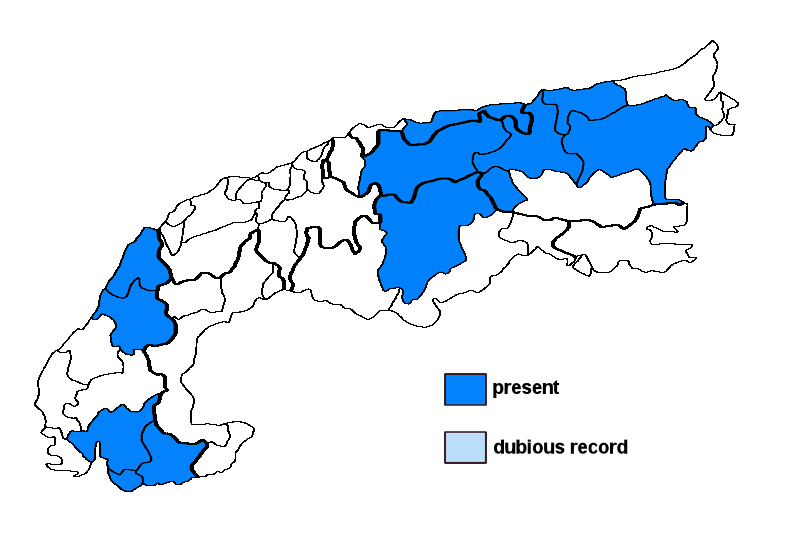Collemopsidium caesium (Nyl.) Coppins & Aptroot
Syn.: Arthopyrenia caesia (Nyl.) Zahlbr., Arthopyrenia nylanderi (Hepp) Riedl, Leiophloea caesia (Nyl.) Trevis., Leiophloea nylanderi (Hepp) Trevis., Pseudarthopyrenia caesia (Nyl.) Keissl., Pyrenocollema caesium (Nyl.) R.C. Harris, Pyrenocollema tichothecioides (Arnold) R.C. Harris, Sagedia nylanderi Hepp, Verrucaria caesia Nyl.
Lichenised.
Substrate: calciferous rocks
Altitudinal range: from the montane belt (potential vegetation: deciduous forests dominated by Fagus sylvatica and closed coniferous forests with Picea abies) to the alpine belt (potential vegetation: treeless Alpine grasslands and tundras, to the lower limit of perennial snow and the equilibrium line of glaciers)
Note: a species with a partly endolithic, whitish to bluish grey thallus (forming dark brown, thin patches on non-calcareous rocks only), semi-immersed perithecioid ascomata containing anastomosing interascal filaments, 8-spored asci, and 1-septate ascospores with an attenuated lower end; the generic placement and the synonymy of Verrucaria caesia (type from the western Mediterranean near the sea, ascospores exceeding 25 µm in length) and Arthopyrenia tichothecioides (type from the Northern Alps in the montane belt, ascospores shorter than 25 µm) are in need of re-evaluation, as is the ecology (perhaps a lichenicolous species); on boulders and steeply inclined to vertical surfaces of permanently damp or moist limestones or base-rich siliceous rocks; widespread in the Holarctic region, but not common; in the Alps ranging from mid- to high elevations.

Austria: Tirol; Salzburg; Steiermark; Oberösterreich; Germany: Oberbayern; France: Alpes-de-Haute-Provence; Alpes-Maritimes; Savoie; Haute-Savoie; Var; Italy: Trentino Alto Adige;





